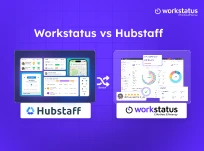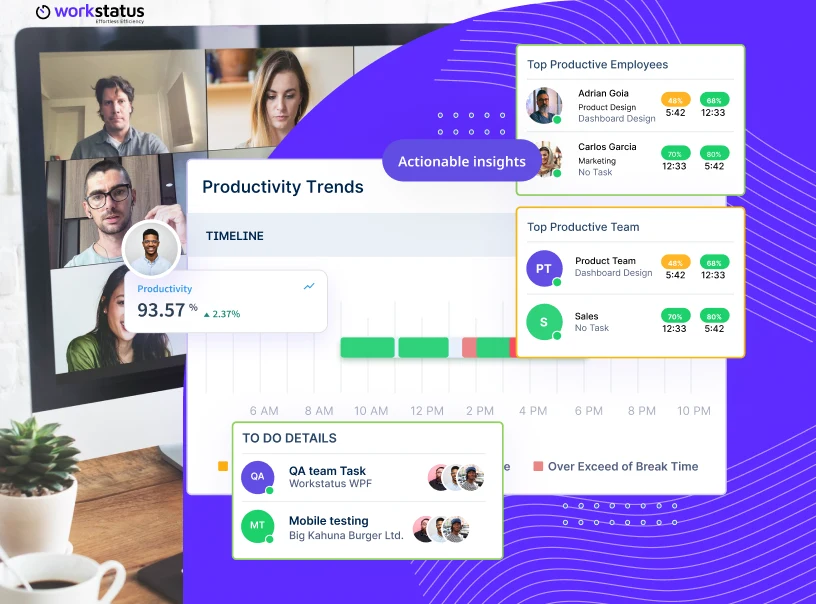Table of Contents
How can productivity be measured to assess employees’ efficiency and effectiveness in achieving organizational goals? Employee Performance Metrics are critical for assessing performance and identifying areas for improvement, including:
- Adopting time efficiency and task accomplishment measurement.
- Motivation of the employees and issues of team identity.
- Detecting in which areas training or further support is required.
Today, performance monitoring is critical in competitiveness, company growth, and achieving strategic objectives in most contemporary organizations.
The productivity calculator eases this by giving real-time productivity figures for each employee and group, facilitating fair modification for every employee. A recent Gallup study revealed that just 21% of employees strongly agree that they have performance metrics they can control.
Including these calculators in performance management increases organizational production and results in lasting success.
Let’s get into it!
Importance of Employee Performance Metrics
Tracking employee performance is fundamental to building a productive, motivated workforce aligned with organizational objectives. Performance metrics give HR managers the tools to effectively measure, analyze, and optimize employee contributions.
Besides, a Deloitte survey shows that 77% of employees reported experiencing burnout in their current roles, highlighting its widespread impact across organizations.
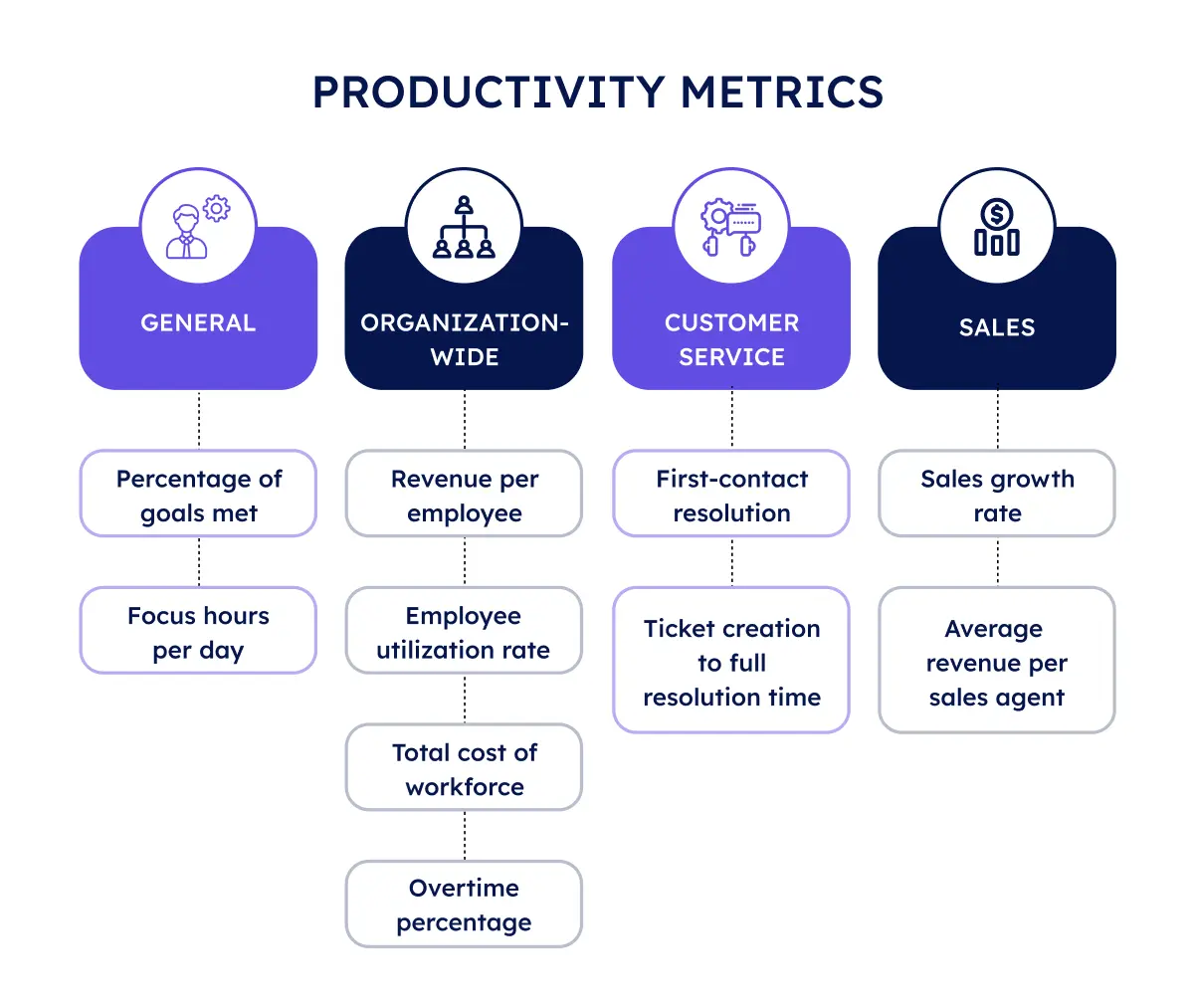
Why Performance Metrics Matter for HR Managers?
- Fair and Consistent Evaluations: Metrics eliminate biases by offering objective data to evaluate employee performance, ensuring fairness and transparency in the workplace.
- Improved Decision-Making: HR managers can use metrics to make informed decisions regarding promotions, rewards, or interventions, fostering trust and satisfaction among employees.
- Engagement and Retention: Employees regularly assessed and given constructive feedback feel more valued, leading to higher engagement and retention rates.
Impact of Performance Tracking on Organizational Success
- Enhanced Productivity: Tracking helps identify top performers and areas where employees need support, enabling teams to work optimally.
- Accountability and Improvement: Performance metrics encourage employees to take ownership of their roles while promoting a culture of continuous learning and development.
- Strategic Growth: Data-driven insights from performance tracking enable organizations to align talent strategies with long-term business goals, ensuring competitive advantage.
Aligning Individual Performance with Company Goals
- Direct Contribution to Success: Metrics ensure that employees understand how their roles contribute to the organization’s broader objectives, creating a sense of purpose.
- Team and Strategy Alignment: Aligning individual and team goals with company strategies ensures that efforts are focused on the most impactful areas.
- Motivation Through Clarity: Employees are more driven when they see how their achievements directly impact the company’s success, fostering a high-performance culture.
Effective performance metrics empower HR managers to drive individual excellence, align efforts with organizational goals, and achieve long-term success.
Key Challenges in Measuring Productivity
Monitoring employee productivity is crucial for any organization, but challenges often hinder effective performance tracking. For example, a company faces various obstacles in the tech industry while accurately assessing its employees’ contributions.

Lack of Standardized Metrics
Different teams used varying criteria to define productivity, causing inconsistency in performance assessments. For example, development focused on task completion time, while customer support tracked response rates.
- Inconsistent benchmarks
- Unclear expectations
Tracking Remote and Hybrid Employees
With a growing remote workforce, tracking productivity has become more complex. Managers faced difficulties ensuring adherence to schedules and task completion without direct supervision.
- Harder engagement and time tracking
- Gaps in communication
Biases and Inconsistencies in Manual Evaluations
Manual evaluations often introduced biases, such as employees with strong personalities receiving better ratings while quieter employees being overlooked.
- Subjective reviews
- Damaged trust and morale
Lack of Real-Time Data
Without proper tools, managers relied on outdated reports, which didn’t reflect day-to-day productivity. This led to missed opportunities to address performance issues quickly.
- Missed opportunities
- Delayed feedback
Difficulty in Setting Realistic and Achievable Goals
Managers struggled to set goals that were challenging yet achievable. Unrealistic goals led to burnout, while easy ones lacked motivation.
- Lack of direction
- Reduced motivation
Inability to Link Performance to Business Outcomes
Without clear metrics, linking individual productivity to company success was challenging. This hindered data-driven decisions about resource allocation and talent development.
- Difficult resource allocation
- No clear impact on company goals
Recognizing these challenges, the company adopted a productivity calculator to clarify and standardize its performance-tracking process. The tool helped eliminate biases, provide real-time data, and align individual goals with business objectives, ultimately improving the fairness and accuracy of employee evaluations.
Benefits of Using a Productivity Calculator
After recognizing the challenges in measuring productivity, the company adopted a productivity calculator, which brought several key benefits.
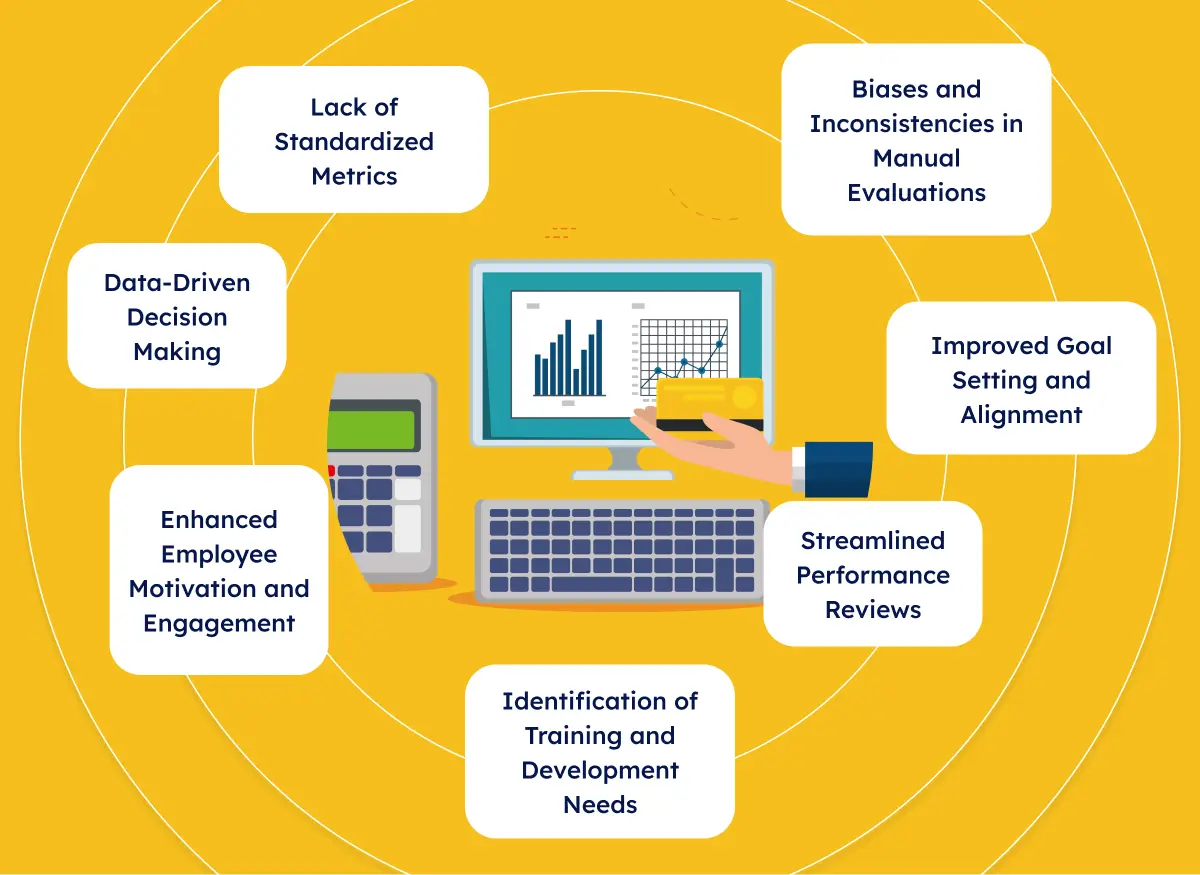
Consistent and Standardized Measurements
The calculator standardized performance evaluations across departments. Using consistent metrics aligned with company goals ensured fairer, more reliable assessments, eliminating confusion from varying departmental criteria.
Real-Time Performance Insights
The tool provided real-time data on task completion, work hours, and milestones. Managers could quickly identify high performers and address issues immediately, reducing delays in performance management.
Data-Driven Decision Making
The calculator allowed HR managers to make decisions based on precise, objective data, whether for promotions, bonuses, or training. This transparency built trust, as employees evaluated their performance fairly and consistently.
Improved Goal Setting and Alignment
With insights into individual and team performance, the company could set realistic and achievable goals aligned with organizational objectives. This ensured every employee’s efforts contributed to the business’s success.
Enhanced Employee Motivation and Engagement
Employees understood how their work impacted the company and appreciated the regular feedback. The clarity of performance expectations boosted motivation and engagement, fostering a positive workplace culture.
Streamlined Performance Reviews
The calculator simplified performance reviews by generating accurate reports, making review meetings more focused and objective. HR managers could provide more constructive feedback, benefiting the company and employees.
Identification of Training and Development Needs
The tool helped identify skill gaps by analyzing performance data, allowing managers to offer targeted training and development opportunities. This ensured employees had the resources to succeed and grow within the company.
Adopting the productivity calculator improved fairness and accuracy in performance tracking, enhanced employee engagement, and aligned individual goals with business objectives, driving overall success.
How to Measure Employee Performance Effectively?
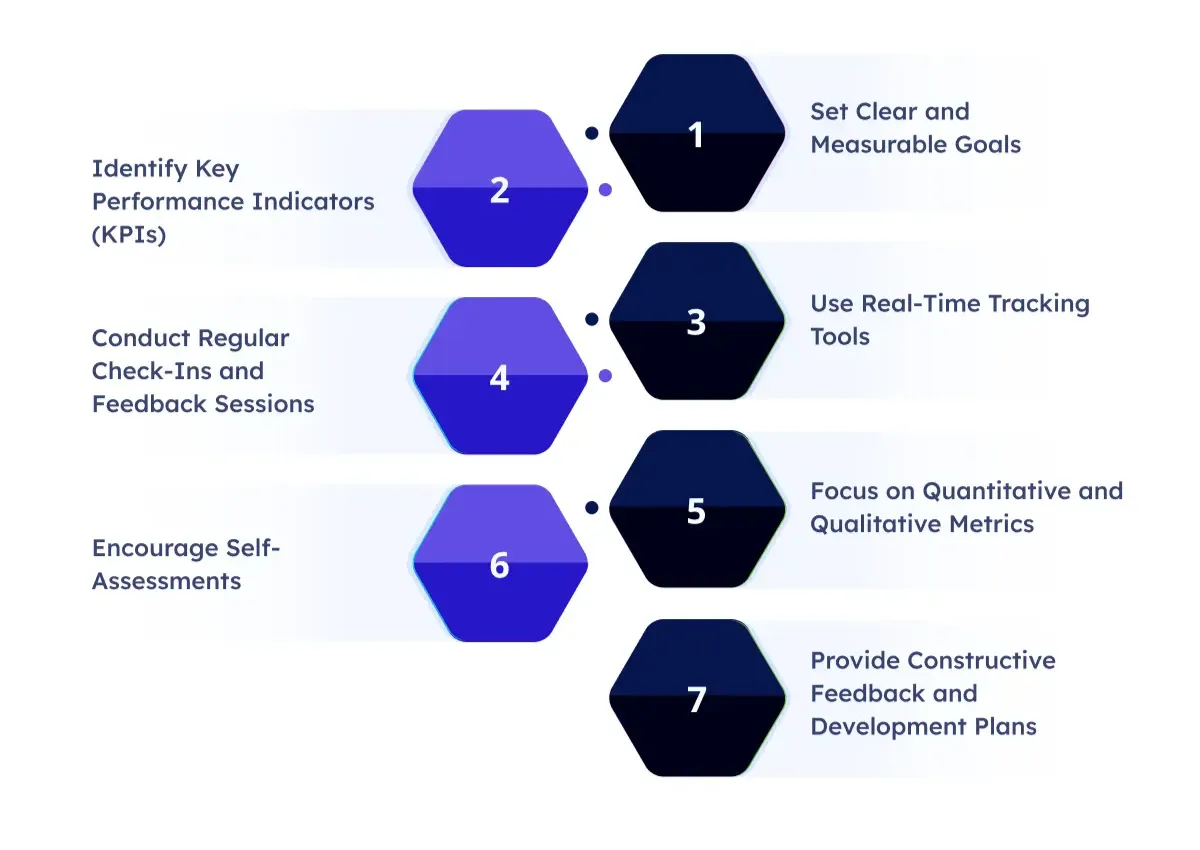 Measuring employee performance effectively requires a structured approach that combines clear objectives, consistent tracking, and timely feedback. Here are the key steps for effective performance measurement:
Measuring employee performance effectively requires a structured approach that combines clear objectives, consistent tracking, and timely feedback. Here are the key steps for effective performance measurement:
Set Clear and Measurable Goals
Set specific, measurable, achievable, relevant, and timely (SMART) business objectives and communicate strategic objectives to help employees grasp the organization’s goals. A productivity calculator applies to a formal goal-setting process and relates the obtained results to the company’s goals and objectives.
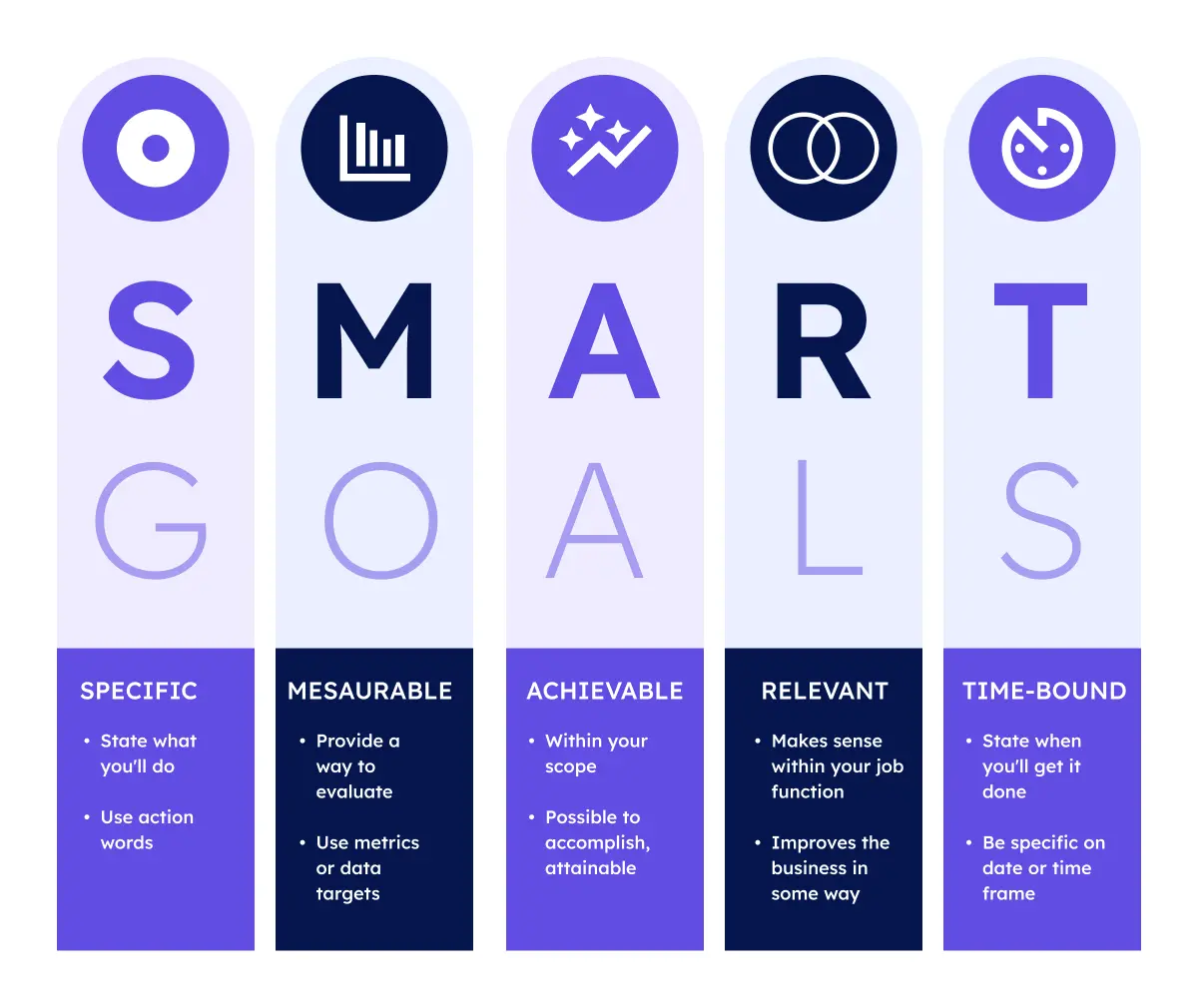
Identify Key Performance Indicators (KPIs)
Identify the measures that define the results-oriented performance expected from various positions: production rates, quality, customer satisfaction, etc. Focusing on the specific, job-related performance indicators in KPIs is crucial.
Use Real-Time Tracking Tools
Use performance feedback gadgets that involve AI, like a productivity-monitoring gadget or a productivity assessment device that alerts and informs at intervals. This will make it easier to track successive improvements within the organizational setting.
Conduct Regular Check-Ins and Feedback Sessions
Have a calendared check-in to assess performance, revise goals, and discuss problems. Avail processes productivity reports and performance analysis to inform the feedback session and assist employees in enhancing their outcomes.
Focus on Quantitative and Qualitative Metrics
Maintain balanced data collection with both quantitative metrics (e.g., task completion) and qualitative metrics (e.g., creativity, teamwork). This will provide a holistic view of employee performance.
Encourage Self-Assessments
Include self-reflection questions in performance reviews to gather extra employee insights, adding valuable context to your performance evaluation. These insights complement data from AI-powered productivity trackers.
Provide Constructive Feedback and Development Plans
Offer developmental feedback that highlights achievements and areas of improvement. Use performance analytics to back up feedback with data and create customized employee development plans.
Ensure Fairness and Consistency
Use standardized criteria to evaluate all employees fairly and without bias in your performance evaluations. A reliable productivity measurement tool can help maintain consistency in assessments.
By using these strategies, backed by the best productivity management software, organizations can ensure effective performance measurement, continuous improvement, and enhanced overall productivity.
Implement Workstatus for Accurate Productivity Insights
Workstatus empowers businesses with accurate productivity metrics, ensuring teams stay on track and goals are met efficiently. Its customizable features allow you to identify trends, address inefficiencies, and drive continuous improvement.
Here are the key features to enable real-time performance monitoring for productivity insights :
Real-Time Activity Monitoring
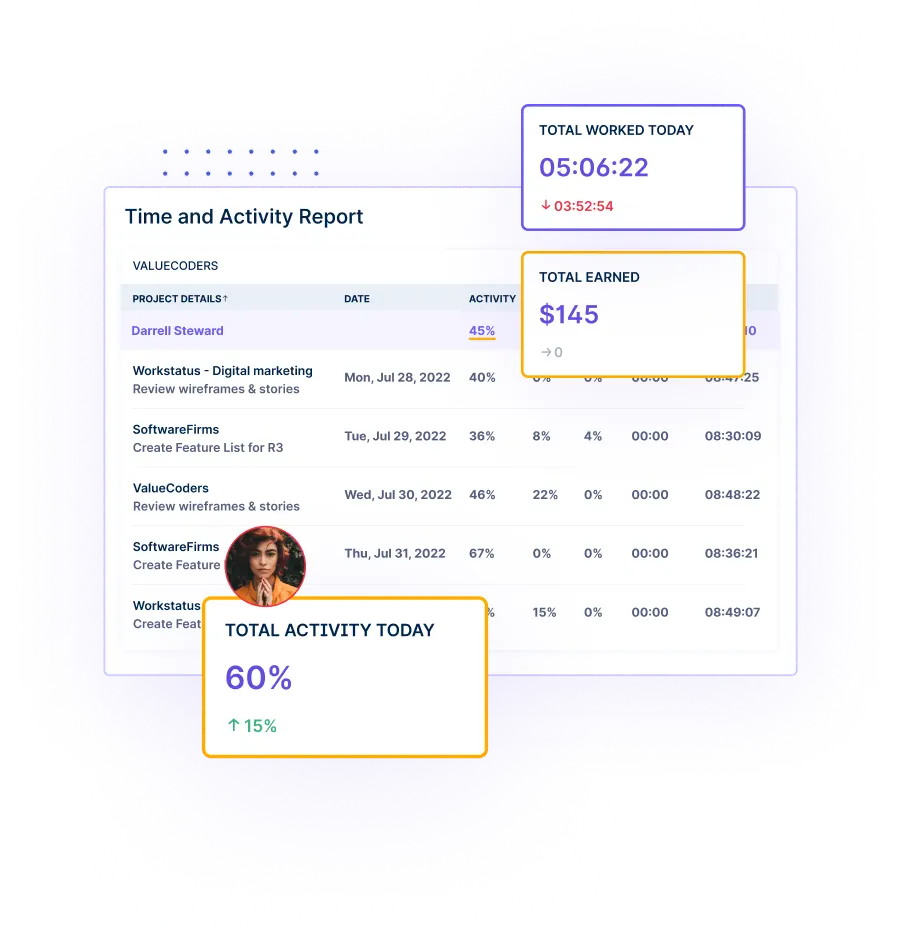 Workstatus enables constant tracking of employee activities and time spent on various tasks or applications. This feature provides key insights into how employees use their working hours to execute their duties using time analysis, enhancing overall workplace efficiency.
Workstatus enables constant tracking of employee activities and time spent on various tasks or applications. This feature provides key insights into how employees use their working hours to execute their duties using time analysis, enhancing overall workplace efficiency.
Idle Time Detection
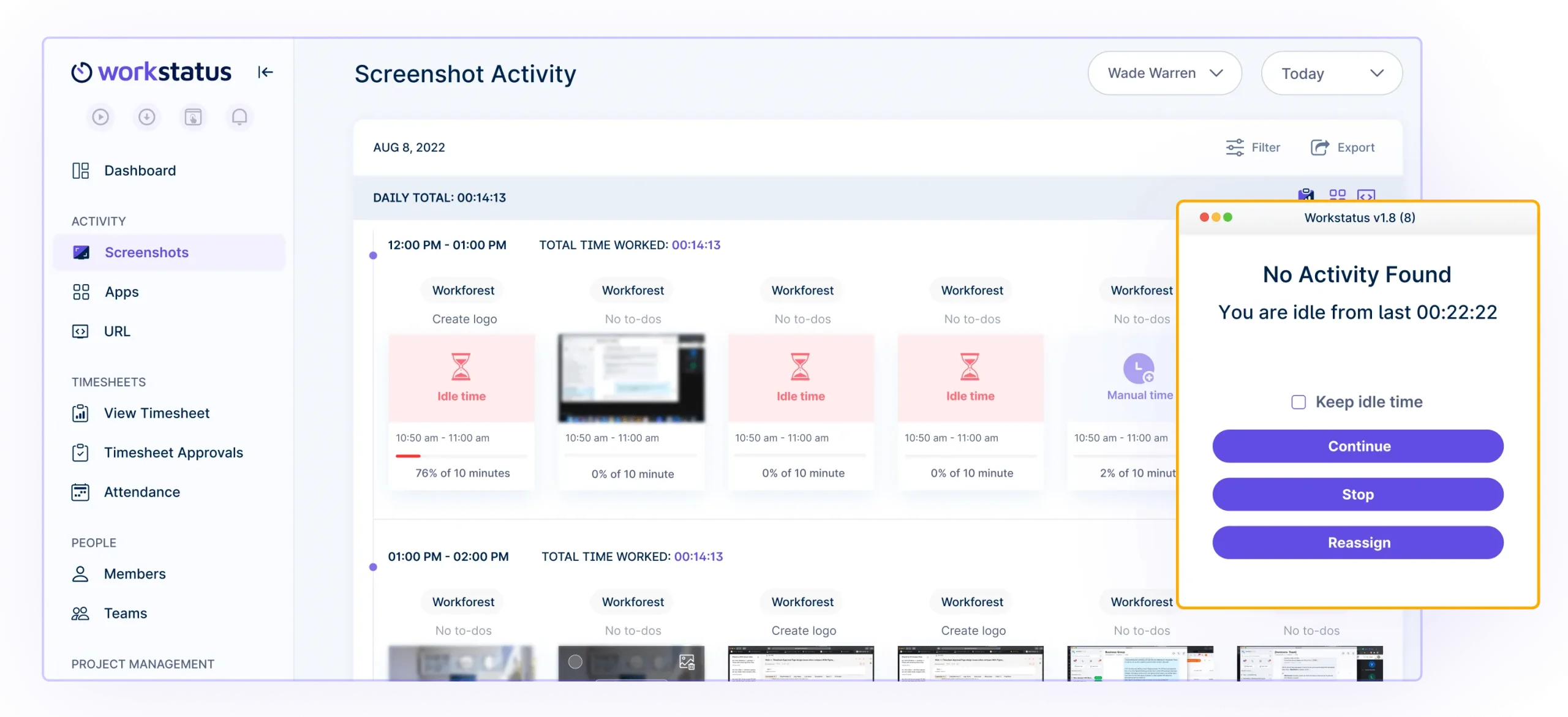 Idle time detection helps managers understand when employees are inactive at work. This data can be used to provide feedback and ensure employees remain productive and focused.
Idle time detection helps managers understand when employees are inactive at work. This data can be used to provide feedback and ensure employees remain productive and focused.
Time Tracking and Task Management
![]() With automatic time tracking, employees can log the hours worked and assign them to specific jobs. This feature is ideal for capturing billable hours, tracking task completion, and analyzing general efficiency through productivity measurement tools.
With automatic time tracking, employees can log the hours worked and assign them to specific jobs. This feature is ideal for capturing billable hours, tracking task completion, and analyzing general efficiency through productivity measurement tools.
Geofencing and Location Tracking
![]() For employees stationed at worksites or operating remotely, geofencing and location tracking allow managers to monitor their whereabouts and productivity in real time, ensuring that performance remains on track.
For employees stationed at worksites or operating remotely, geofencing and location tracking allow managers to monitor their whereabouts and productivity in real time, ensuring that performance remains on track.
Productivity Reports and Analytics
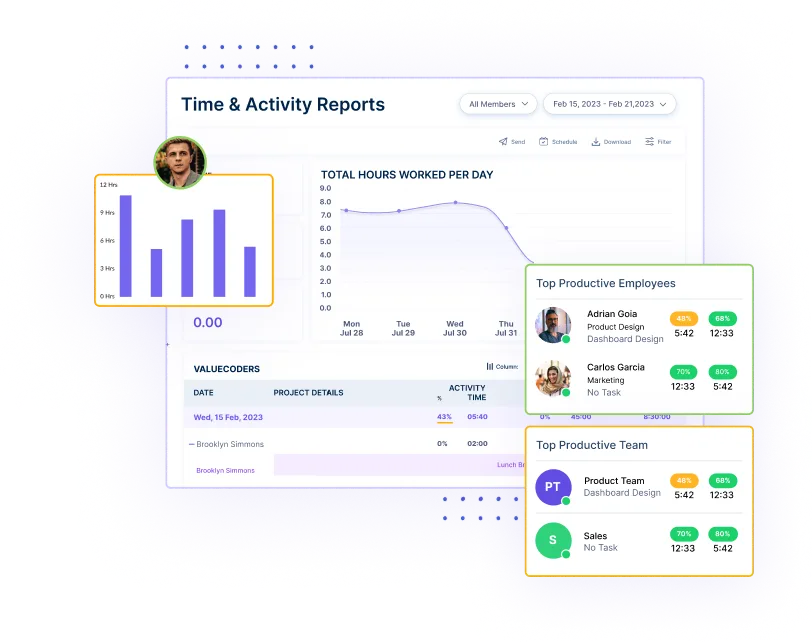 Workstatus enables one to produce productivity reports; it has a detailed analysis of progress for individuals and groups. Such reports capture hours worked, idle time, and task completion, which will assist managers.
Workstatus enables one to produce productivity reports; it has a detailed analysis of progress for individuals and groups. Such reports capture hours worked, idle time, and task completion, which will assist managers.
Habit Tracker App
![]() The habit tracker app is designed to support positive behavior change at the workplace by improving employees’ habits. Managers can use the data to help employees stay on course to achieve their goals and improve performance.
The habit tracker app is designed to support positive behavior change at the workplace by improving employees’ habits. Managers can use the data to help employees stay on course to achieve their goals and improve performance.
Therefore, the features of Workstatus offer organizations the most accurate pictures of employee productivity as it occurs. These translate to increased accountability and better time management methods, empowering continuous learning and team performance along with data in performance.
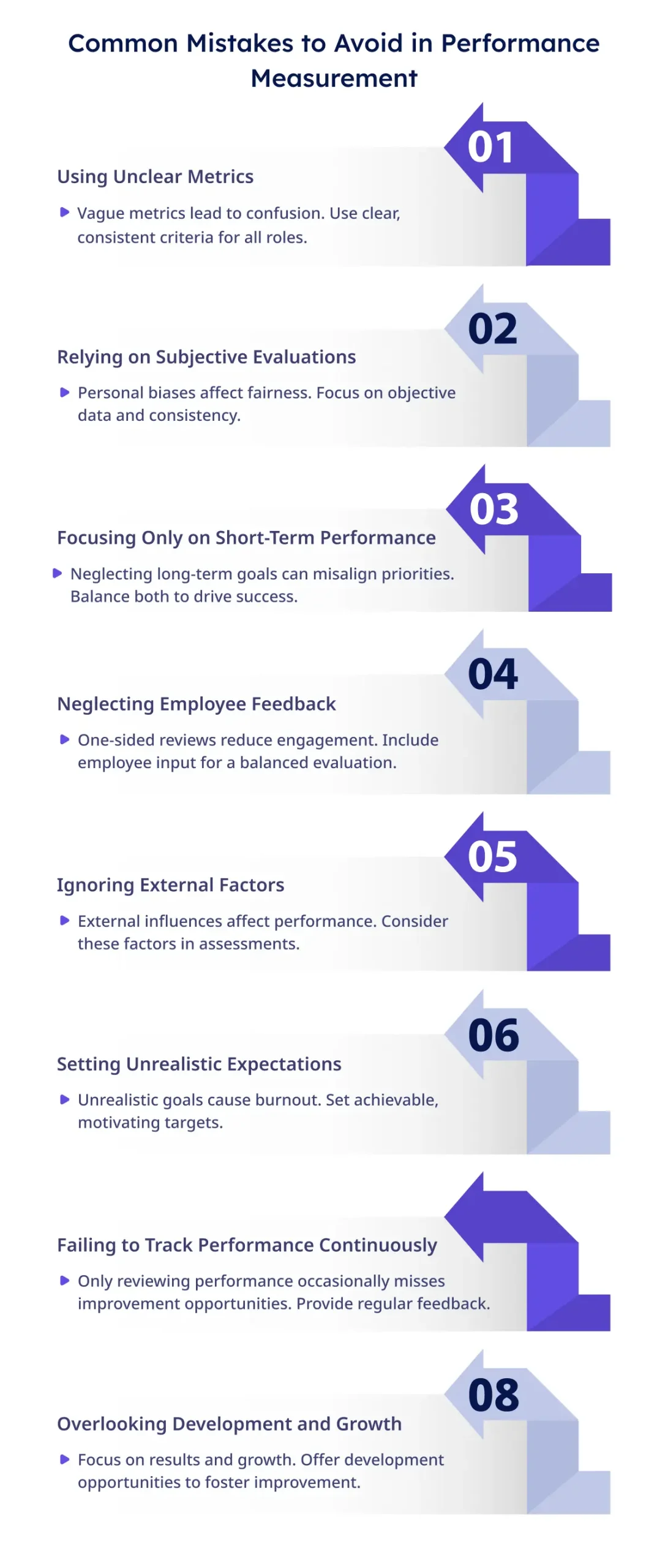
Closing Thoughts
Finally, performance management and appraisals are crucial for organizations to ensure employee performance drives growth and meets objectives.
These include tools like a productivity calculator to gain insights, optimize resources, and encourage team accountability. Employee performance metrics and performance analytics provide actionable data for practical assessments. Productivity measurement tools track and measure workplace efficiency, ensuring alignment with company goals.
Workstatus is an effective tool for monitoring and guiding work efficiency, delivering instant results.
Looking to refresh your performance management approach? Start with Workstatus today and take your team to the next level!
FAQs
Ques: How can a productivity calculator improve employee performance?
Ans: It provides real-time data, identifies performance gaps, and offers actionable insights to optimize workflows and drive better results.
Ques: Can a productivity calculator track remote employees?
Ans: Yes, productivity calculators, including Workstatus, track both in-office and remote employees, ensuring transparency and accountability regardless of location.
Ques: How does Workstatus help in measuring employee productivity?
Ans: Workstatus offers features like real-time tracking, performance analytics, and reporting tools that allow HR managers to monitor productivity and make data-driven decisions.



